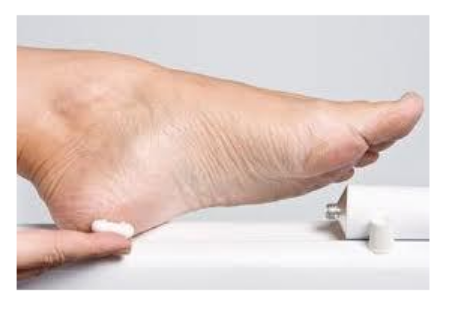
AGNIKARMA IN AYURVEDA
- April 21, 2021
- Posted by Dr. Vaidya Karanvir Singh
- 0 Comment(s)
Table of Contents
INTRODUCTION-
Agnikarma( Fire/thermal cautery) is better than even the Kshara, In Agnikarma the recurrence of the diseases will not be there if once they are treated and cured by it. Agnikarma can be used even in diseases which have not been successfully cured by Aushdha (Medicine), Kshara (Alkali) or Shastrakarma (Surgery).
Acharya Sushrut included Agnikarma in the Anushastra i.e. parasurgical procedures. Agnikarma could be correlated to thermal cauterization.
TYPES OF AGNIKARMA-
Acharya sushrut described four types of Agnikarma
- Tvacha (Skin)
- Mansa (Muscles)
- Sira (Vessels) and Snayu (ligaments,tendons)
- Sandhi (joints) and Asthi (bones) But some other says only twaka and mansa
Types of Agnikarma According to pattern of Agnikarma (Dahana Vishesha)
- Circular (Valaya)
- Dotted (Bindhu)
- Straight line (Vilekha)
- Wide spread (Pratisarana)
- Semi lunar (Arthachandra)
- Four tailed mark (Swastika)
- Eight tailed mark (Ashtapada)
INDICATION OF AGNI KARMA-
- The pain aggravated by vata in tvacha (skin) , mans (muscle), sira, snayu (Ligament), sandhi (Joint) and asthi (Bone)
- Chronic wound having some hard elevated tissue.
- Cystic lesion and tumors
- Rectal fistula and foul ulcers
- Sinus lymphadenopathy
- To stop bleeding from cut vessels.
- In diseases like black moles
- Filarial disease (Medas vikara)
- Moles on skin
- Glucoma/Adhimantha- a disease of the eye
- Hernia
- Warts on skin and cysts
- Hemorrhoids
- Joint disorders (Sandhi vikara)
- Glands in neck
- Profuse haemorrhages
PROCEDURE OF AGNIKARMA-
- The careful examination of patients as well as disease is must prior to the Agnikarma procedure.
- Required equipments for Agnikarma should be kept ready.
- Sheeta and Picchila Ahara should be given
- In Mooda Garbha, Ashmari, Bhagandara, Udara Roga, Arshas and Mukha Rogas Agnikarma should be done on empty stomach
- Take the red hot shalaka(Rod) and touch the shalaka on identified marks for few seconds and withdraw it followed by immediate application of aloe vera pulp (ghritkumari swaras).
- After proper burning of site apply medicated ghee and honey, paste of drugs which are unctuous and cold in potency (snigdha, sheeta).
- Patient should be advised to avoid wet that area up-to 24 hrs.
Features Of Adequate Burning (Samyaka Dagdha Lakshana)-
- Pain is in mild intensity
- Ana-Awagadha Vranata (wound which is not too deep)
- Easy wound healing
- Proper burning are stoppage of bleeding
- Emergence of crackling sound accompanied with lymph
- The area having color resembling a ripe tala fruit or pigeon dark grey.
- The burn injury which is not very superficial
- Susamshita vrana (without elevation and depression).
TYPES OF AGNIDAGDHA-
Tuccha/Plushta Dagdha-
- The affected part become different in color from skin
- Very severe burning sensation.
- Condition almost similar to first degree burn.
Durdagdha-
- Sphota-Blisters formation
- severe burning sensation
- redness
- Paka-suppuration and exudation
- pain remains for very long time
In case of durdagdha hot (Ushna) and cold (Sheet) treatment should be done.
Samyaka Dagdha-
- In Samyaka dagdha The burnt area is not much deep.
- The burn injury is not more superficial.
- Samyaka dagdha site appear like Asian palm fruit (taal phal varna),
- This is not considered as injury when performed for the therapeutic purpose.
- Sira Snayu Dagdha Lakshanas are ulcer becoming black and elevated, cessation of exudation Agnikarma
- Dagdha Lakshana of Sandhi and Asthi are appearance of dryness and slight red colour, roughness and firmness.
In case of Samyagdadha a paste (Kalka) of Tavaksiri, Guggulu (commifera mukul), Chandana (Sandalwood), Gairika (Red ochre) and Guduchi (Tinospora cordifolia) mixed with ghee should be applied on the area of burn.
Atidagdha (Deep burn)-
- Sankocha – constriction,
- Daha – burning sensation with pain
- Jwara-high grade fever
- Pipasa –excessive thirst
- Dhupana – feeling of hot fumes coming out
- Siradi nasha – destruction of veins etc
- Gambhira Vrana -Delayed wound healing/ worsening of the wound
- Vevarnya-Discoloration of particular part
- Murchha-, loss of consciousness
- Mrutyu – death.
- Mamsalambana – dropping down of the muscles
In case of Atidagdha (over burning) Visarpa of Pitta origin treatment should be done quickly.
CONTRAINDICATION OF AGNI KARMA –
- Person who have pittaj and raktaj disorders
- Patients with concealed bleeding
- Agnikarma should not be done for those who are unfit for Kshara karma.
- It is contraindicated or accumulation of blood inside the wound
- Persons who have perforation of intestine and abdominal viscera.
- Person who are suffering from severe multiple wounds
- In children and old age person.
- Retain foreign body
- Who are not fit for Swedana Karma.

Dr. Vaidya Karanvir Singh is the younger Vaidya in Chandigarh Ayurved & Panchakarma Centre. He is the fourth generation in his family who is practicing as a general consultant in Ayurved & Panchakarma treatment at Chandigarh. In his practice, he had treated more than 1 Lakh Plus patients worldwide.

